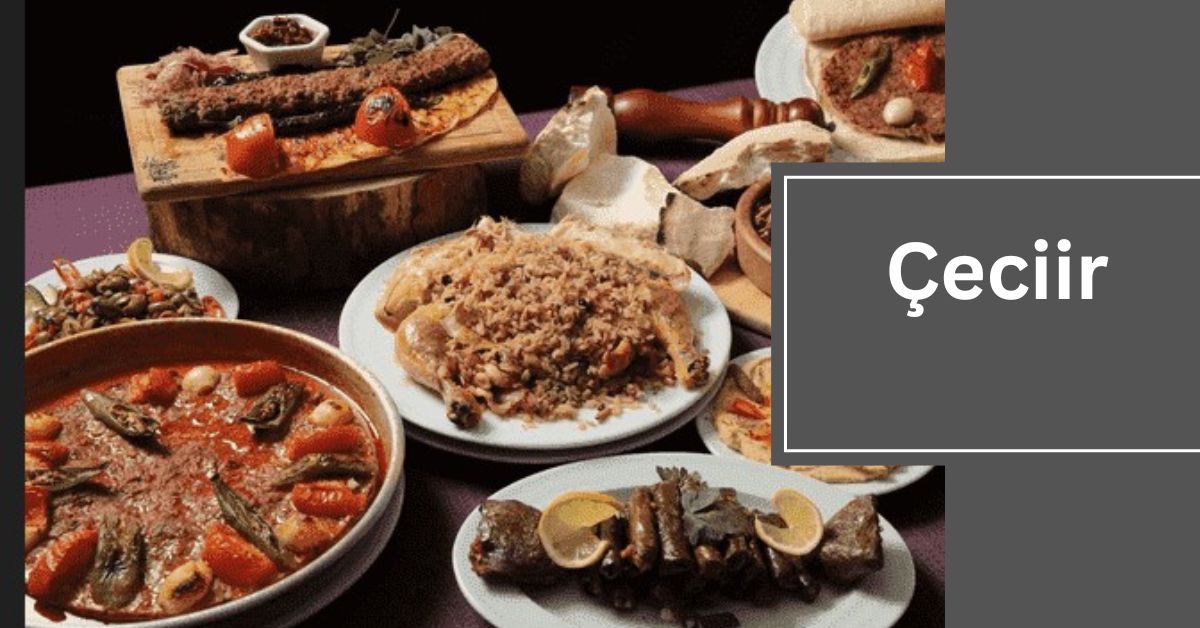Çeciir – Discover The Richness Of Turkish Cuisine!
Sarah found relief from gluten sensitivity with çeciir flour. Its delicious taste and flexibility in baking made her transition to gluten-free living easier.
Çeciir flour, a gluten-free favorite in Turkish cuisine, offers rich flavor and versatility, crafted from chickpeas or fava beans. Its nutritional profile and adaptability make it a beloved choice for diverse recipes worldwide.
In this article, we will delve into the fascinating world of çeciir, exploring its origins, culinary uses, and nutritional benefits.
What Is Çeciir Flour?- Let’s Learn!
Çeciir flour is a gluten-free alternative to traditional wheat flour, made predominantly from either chickpeas or fava beans. Known for its nutty flavor and versatile nature, çeciir flour has gained popularity in Turkish cuisine and beyond for its ability to add richness and depth to a variety of dishes.

It offers a nutritious option for those with gluten sensitivities or dietary preferences, boasting high protein and fiber content along with essential vitamins and minerals.
Where Does Çeciir Flour Originate From?
Çeciir flour traces its roots back to the ancient agricultural practices of Anatolia, a region known for its rich culinary heritage. Primarily derived from either chickpeas or fava beans, çeciir flour reflects the agricultural traditions of the region, where these legumes have been cultivated for centuries.
The meticulous process of grinding and milling these beans into flour has been perfected over generations, resulting in the fine-textured, nutrient-rich flour known as çeciir.
Renowned for its role in Turkish cuisine, çeciir flour embodies the essence of Anatolian culinary traditions, offering a taste of history and heritage in every dish.
Also read: Geekzilla Autos – Explore Now!
What Are The Main Ingredients Used To Make Çeciir Flour?
The production of çeciir flour begins with the careful selection of high-quality chickpeas or fava beans, sourced primarily from Anatolian fields. These legumes undergo a rigorous cleaning process to remove impurities before being dried and milled into a fine powder.

The resulting çeciir flour boasts a high protein and fiber content, along with essential vitamins and minerals, making it a nutritious choice for gluten-free baking and cooking.
With its wholesome ingredients and artisanal craftsmanship, çeciir flour embodies the essence of traditional Anatolian cuisine while meeting the demands of modern dietary preferences.
What Sets Çeciir Flour Apart From Traditional Wheat Flour?
What sets çeciir flour apart from traditional wheat flour is its gluten-free nature and unique flavor profile. Unlike wheat flour, which contains gluten, çeciir flour is made from chickpeas or fava beans, making it suitable for those with gluten sensitivities or celiac disease.
Additionally, çeciir flour imparts a distinct nutty flavor to dishes, adding depth and complexity to recipes. Its rich nutritional content, including high protein and fiber levels, further distinguishes it as a wholesome alternative to traditional wheat flour, catering to diverse dietary needs and preferences.
Also read: Aze300x – Discover now!
How Does Çeciir Flour Contribute To Digestive Health?
Çeciir flour contributes to digestive health primarily due to its high fiber content, which supports a healthy gut microbiome and promotes regular bowel movements, aiding in the prevention of constipation.

Furthermore, çeciir flour contains essential nutrients like magnesium and folate, which are beneficial for heart health and overall well-being. Overall, incorporating çeciir flour into one’s diet can contribute to improved digestive function and overall health.
What Are Some Traditional Turkish Dishes That Incorporate Çeciir Flour?- Step-By-Step Guide!
- Gözleme: Traditional Turkish flatbread stuffed with various fillings like spinach, cheese, or minced meat, often made with çeciir flour for added flavor and texture.
- Lahmacun: Thin, crispy Turkish pizza topped with a savory mixture of minced meat, vegetables, and herbs, typically featuring çeciir flour in the dough.
- Mercimek Köftesi: Turkish lentil patties made with bulgur wheat, onions, tomato paste, and çeciir flour, shaped into balls or patties and served as a popular appetizer or snack.
- Kısır: Turkish bulgur salad mixed with finely chopped vegetables, herbs, spices, and a dressing made with olive oil, lemon juice, and pomegranate molasses, sometimes incorporating çeciir flour for added nutritional value and texture.
- Manti: Turkish dumplings filled with spiced meat or cheese, served with yogurt and garlic-infused tomato sauce, occasionally made with çeciir flour for a heartier dough.
Also read: Õygen – Discover the Future of Breathability!
How Does Çeciir Flour Fit Into Vegetarian And Vegan Diets?
Çeciir flour is a versatile ingredient that fits seamlessly into vegetarian and vegan diets due to its plant-based origin and rich nutritional profile. It serves as an excellent source of protein and fiber, essential for meeting the dietary needs of individuals following plant-based lifestyles.

Moreover, çeciir flour adds texture and flavor to various vegetarian and vegan dishes, such as veggie burgers, falafel, and vegetable fritters, providing a satisfying and nutritious alternative to animal-based ingredients.
What Are Some Innovative Recipes That Use Çeciir Flour?
- Çeciir Flour Pizza: Create a gluten-free pizza crust using çeciir flour for a nutty flavor and hearty texture.
- Chickpea Flatbread: Make a simple flatbread using çeciir flour, water, and seasoning, then top with your favorite ingredients for a quick and healthy meal.
- Fava Bean Pancakes: Whip up fluffy pancakes using a blend of çeciir flour and fava bean flour for added protein and fiber.
- Gluten-Free Chocolate Chip Cookies: Bake delicious cookies using çeciir flour as a base, adding chocolate chips and nuts for extra flavor and texture.
- Spiced Chickpea Fritters: Prepare crispy fritters by combining çeciir flour with spices, chopped vegetables, and herbs, then frying until golden brown and crispy.
Also read: Zyzz Pose – A Simple Guide!
Faq’s:
1. Are there any cultural or historical significance associated with çeciir flour?
Çeciir flour carries significant cultural and historical value within Turkish cuisine. Embedded in Anatolian culinary traditions for centuries, its use reflects the region’s rich heritage and the resourcefulness of its people.
2. How does the taste of çeciir flour compare to traditional wheat flour?
Çeciir flour has a distinct taste compared to traditional wheat flour, offering a nuttier and earthier flavor profile. While wheat flour tends to be milder in taste, çeciir flour adds depth and richness to dishes, enhancing their overall flavor.
3. Is çeciir flour suitable for individuals with nut allergies?
Çeciir flour is a safe choice for individuals with nut allergies since it’s derived from chickpeas or fava beans and doesn’t contain any nuts. It provides a versatile and nut-free option for those with dietary restrictions, ensuring they can still enjoy delicious meals without worry.
4. What cooking techniques work best with çeciir flour?
Çeciir flour lends itself well to various cooking techniques, making it a versatile ingredient in the kitchen. When it comes to baking, it adds a nutty flavor and dense texture to bread, muffins, cakes, and cookies. For frying, çeciir flour creates crispy coatings for dishes like falafel, fritters, and pancakes.
Conclusion:
Çeciir flour, integral to Turkish culinary tradition, provides rich flavor and nutrition. Gluten-free and versatile, it caters to diverse dietary needs, fostering culinary innovation and inclusive cooking worldwide.
Read more:







